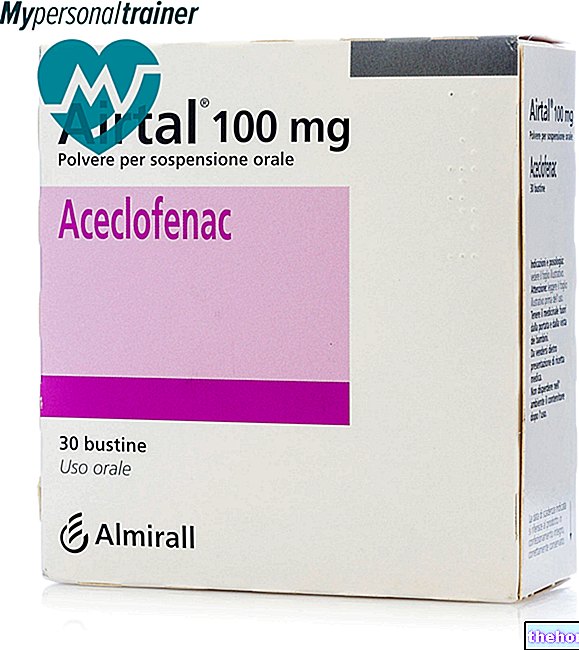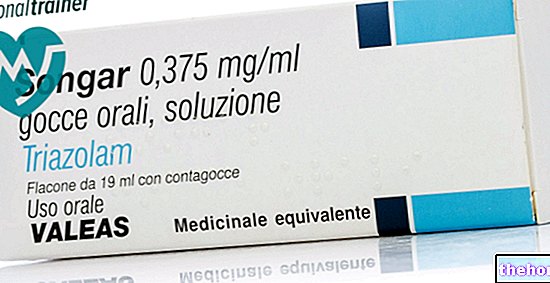Active ingredients: Phytomenadione (Vitamin K)
Konakion 10 mg / ml oral and injectable solution for intravenous use
Konakion package inserts are available for pack sizes:- Konakion 10 mg / ml oral and injectable solution for intravenous use
- Konakion early childhood 2 mg / 0.2 ml oral and injectable solution
Why is Konakion used? What is it for?
Konakion contains the active ingredient phytomenadione (synthetic vitamin K1), an anti-bleeding medicine that prevents and treats blood loss from blood vessels.
The blood has mechanisms to block this type of loss by means of platelets (a type of blood cell) and proteins (fibrinogen and fibrin).
Konakion is indicated in adults and children from 1 year of age for the treatment of:
- Bleeding or danger of bleeding due to a deficiency of prothrombin (due to a deficiency in coagulation factors II, VII, IX and X) due to
- excessive dosage of anticoagulants, medicines to thin the blood,
- combination of anticoagulants and phenylbutazone, a medicine to treat inflammation,
- other conditions in which there is a low production of vitamin K (hypovitaminosis K), a vitamin involved in the body's processes to stop blood loss.
A low production of vitamin K can occur for example in the case of obstruction of a duct where bile flows, a substance useful for digestive processes (occlusion jaundice) which causes yellowing of the skin and whites of the eyes, liver disease and bowel, and after prolonged treatment with antibiotics and sulfonamides (medicines to treat infections) or salicylates (medicines to treat inflammation) (see section Other medicines and Konakion).
Talk to your doctor if you / your child are not feeling better or if you / your child are feeling worse.
Contraindications When Konakion should not be used
Do not take / do not give your child / you will not be given Konakion
- if you / your child are allergic to phytomenadione or any of the other ingredients of this medicine
. If you are an adult, Konakion will not be given to you by "injection into a muscle."
Precautions for use What you need to know before taking Konakion
Talk to your doctor, pharmacist or nurse before taking / giving your child or before you are given Konakion. In particular, tell your doctor:
- if you / the child have severe liver disease. Therefore, your doctor will perform blood tests for you / your child to monitor their fluidity.
Children
Do not give Konakion to children under 1 year of age.
Interactions Which drugs or foods may change the effect of Konakion
Tell your doctor or pharmacist if you / your child are taking, have recently taken or might take any other medicines. Tell your doctor if you / your child are taking:
- anticoagulants, medicines to thin the blood (coumarin drugs);
- anticonvulsants, medicines to treat uncontrolled body movements;
- salicylates, medicines to treat inflammation; and antibiotics, medicines to treat infections, especially in high doses and for long periods.
Warnings It is important to know that:
If you are pregnant or breast-feeding, think you may be pregnant or are planning to have a baby, ask your doctor or pharmacist for advice before taking / being given this medicine.
Pregnancy
Take / you will only be given Konakion when clearly needed, under the direct supervision of your doctor, and only if the expected benefit to you outweighs the potential risk to the fetus.
Feeding time
Only a small fraction of the administered vitamin K1 passes into breast milk. Therefore take / you will be given Konakion at the prescribed doses during breastfeeding.
Driving and using machines
Konakion does not affect the ability to drive or use machines.
Konakion contains sodium and soya
This medicine contains sodium.
This medicinal product contains less than 1 mmol (23 mg) sodium per dose, ie it is essentially "sodium-free".
This medicine contains soya.
If you are allergic to peanuts or soya, do not use this medicine.
Dose, Method and Time of Administration How to use Konakion: Posology
Always take / give your child this medicine exactly as your doctor, pharmacist or nurse has told you. If in doubt, consult your doctor, pharmacist or nurse.
This medicine can be taken / given to the child by mouth or given as an injection into a vein
LIKE
Administration of Konakion by mouth
After breaking the vial, draw up the amount of liquid prescribed by your doctor with a syringe and needle (not provided in the package). Remove the needle and take / administer the contents of the syringe directly into the child's mouth. Swallow / allow the contents of the syringe to be swallowed with some liquid.
Administration of Konakion into a vein
This medicine will be given to you / your child as an injection into a vein by a healthcare professional. If you are unsure, consult your doctor.
HOW MUCH
The dose will be determined by your doctor based on your age and state of health. If you are elderly your doctor will prescribe the appropriate dosage.
Use in children and adolescents
The dose will be determined by the doctor on the basis of the age, weight and state of health of the child. In infants and children under one year of age Konakion Infancy 2 mg / 0.2 ml oral and injectable solution should be used.
Overdose What to do if you have taken too much Konakion
If you take / if you give your child / if you are given more Konakion than you should
If you accidentally take / administer an overdose of Konakion, notify your doctor immediately or go to the nearest hospital.
If you forget to take / if you forget to give your child Konakion
Do not take / give your child a double dose to make up for a forgotten dose.
If you stop taking Konakion
If you have any further questions on the use of this medicine, ask your doctor, pharmacist or nurse.
Side Effects What are the side effects of Konakion
Like all medicines, this medicine can cause side effects, although not everybody gets them.
During or after giving Konakion into a vein you / your child may experience the following serious side effects:
- narrowing of the bronchi which makes it difficult to breathe (bronchospasm),
- skin turning blue (cyanosis),
- increased number of heart beats (tachycardia),
- low blood pressure (hypotension),
- changes in taste,
- hot flashes,
- excessive sweating.
Additional possible side effects, which have occurred after administration of Konakion into a vein, are listed below by frequency or by body part affected:
very rare (may affect up to 1 in 10,000 people),
- Allergic reactions (including anaphylactic shock)
- Irritation or inflammation of a vein (phlebitis)
Effects affecting laboratory tests
- Bromosulfonphthalein retention, a test to see if the liver is functioning well
- Prolongation of prothrombin time, an index of blood fluidity.
These effects have been reported in adults who received high doses.
Additional side effects in children
Allergic reactions
- Allergic reactions can occur in predisposed subjects.
Reporting of side effects
If you and / or your child get any side effects, talk to your doctor, pharmacist or nurse. This includes any possible side effects not listed in this leaflet. You can also report side effects directly via the national reporting system. : //www.aifa.gov.it/content/segnalazioni-reazioni-avverse.
By reporting side effects you can help provide more information on the safety of this medicine.
Expiry and Retention
Do not store above 25 ° C. Do not freeze.
Store in the original package to protect the medicine from light.
Unused content of opened vials cannot be reused and must be discarded.
Keep this medicine out of the sight and reach of children.
Do not use this medicine after the expiry date which is stated on the carton after EXP. The expiry date refers to the last day of that month.
Do not use this medicine if you notice that the clear solution has become cloudy.
Do not throw any medicines via wastewater or household waste. Ask your pharmacist how to throw away medicines you no longer use. This will help protect the environment.
What Konakion contains
- The active ingredient is phytomenadione (vitamin K1) 10 mg
- The other ingredients are glycolic acid, sodium hydroxide, soya lecithin (see section. Konakion contains sodium and soya), hydrochloric acid, water for injections.
Description of what Konakion looks like and contents of the pack
Konakion comes as a transparent solution.
It is available in packs of 3 ampoules of 1 ml.
The solution is contained in an amber glass vial.
The following information is intended for healthcare professionals only:
Standard dosage
Severe or life-threatening haemorrhage due to anticoagulants with dicumarolic action
Withhold the anticoagulant and perform a slow intravenous injection (over at least 30 seconds) of Konakion in the dose of 5-10 mg together with fresh frozen plasma (PFC) or prothrombin complex concentrate (CCP). If necessary, the administration of vitamin K1 can be repeated.
Recommended doses for treatment with vitamin K1 in patients with major bleeding, mild bleeding or asymptomatic depending on the INR value
For lower doses it is possible to use one or more ampoules of Konakion Infancy 2 mg / 0.2 ml oral and injectable solution.
In general, the value of Quick goes back to the therapeutic level of 15-25% in the 3-5 hours following the injection, and the bleeding caused by the preparations with dicumarolic action ceases. If the circumstances require it, treatment with vitamin K1 can be completed by a blood transfusion. If a patient treated with coumarolic preparations must be operated on, the inhibition of coagulation can be neutralized with Konakion, unless the intervention requires protection with anticoagulants.
If the patient is referred to another doctor, inform him of the previous prescription for the doses of Konakion.
Special dosage instructions
Elderly: Use the lowest dosage of the recommended range, given the greater sensitivity of the elderly to vitamin K1 activity. Intravenous or oral administration of small doses of 0.5-1 mg of vitamin K1 has been shown to effectively reduce the amount of vitamin K1. INR a
Children> 1 year of age: The treating physician should decide the optimal dose based on indication and weight. It has been shown in healthy children that administration of one tenth of the full intravenous dose for adults results in an effective reduction of one high INR value (> 8) but asymptomatic.
How to use
At the time of administration, the liquid must be clear. Due to improper storage (exposure to sunlight or to a higher temperature than expected) the solution may appear cloudy. In these cases the drug should not be administered (see section 5. How to store Konakion).
Konakion 10 mg / ml oral and injectable solution for intravenous use must not be diluted or mixed with other solutions to be administered intravenously, but can be injected through the end portion of an infusion set, during a continuous infusion of sodium chloride 0 , 9% or 5% dextrose.
The slow intravenous injection is provided only in case of dangerous hemorrhages from anticoagulants of the dicumarolic type.
The solution for injection must not be diluted or mixed with other solutions to be administered intravenously or intramuscularly
The intravenous injection should be done very slowly
In adults, Konakion ampoules should not be administered intramuscularly as this route results in a deposition effect and continued release of vitamin K1, which could cause difficulties in restoring anticoagulant treatment. Furthermore, the intramuscular route in a subject receiving anticoagulant treatment is associated with the risk of hematoma formation.
Pregnancy
Since vitamin K1 slowly crosses the fetal placental barrier, it is recommended that Konakion not be used in pregnant women as a prophylaxis of neonatal haemorrhagic syndrome.
Feeding time
It is not recommended to use Konakion in breastfeeding women as a prophylaxis of neonatal haemorrhagic syndrome.
Overdose
There are no data available regarding overdose of Konakion in humans. Phytomenadione is not toxic to animals even when administered in large quantities. If necessary, anticoagulant treatment following vitamin K1 overdose, heparin should be used.
Treatment of a suspected overdose should be aimed at relieving symptoms.
Source Package Leaflet: AIFA (Italian Medicines Agency). Content published in January 2016. The information present may not be up-to-date.
To have access to the most up-to-date version, it is advisable to access the AIFA (Italian Medicines Agency) website. Disclaimer and useful information.
01.0 NAME OF THE MEDICINAL PRODUCT
KONAKION 10 MG / ML ORAL AND INJECTABLE SOLUTION FOR INTRAVENOUS USE
02.0 QUALITATIVE AND QUANTITATIVE COMPOSITION
One vial contains:
Active ingredient: phytomenadione (synthetic vitamin K1) 10 mg
For the full list of excipients, see section 6.1.
03.0 PHARMACEUTICAL FORM
Oral and injectable solution.
04.0 CLINICAL INFORMATION
04.1 Therapeutic indications
Bleeding or danger of bleeding from severe "hypoprothrombinemia" (deficiency of coagulation factors II, VII, IX and X) of different etiology, including overdose of coumarin-type anticoagulants, their association with phenylbutazone and other forms of hypovitaminosis K (eg jaundice from occlusion, liver and intestinal diseases, and after prolonged treatments with antibiotics, sulfonamides or salicylates).
04.2 Posology and method of administration
The product can be administered orally or intravenously. The solution should not be diluted or mixed with other injectable products and may be injected, when appropriate, into the end portion of an infusion set, during a continuous infusion of 0.9% sodium chloride or 5% dextrose.
The slow intravenous injection is provided only in case of dangerous hemorrhages from anticoagulants of the dicumarolic type.
In infants and children under one year of age, requiring lower doses, it should be used
Konakion early childhood 2 mg / 0.2 ml oral and injectable solution.
Single doses higher than 20 mg or total doses higher than 40 mg complicate the continuation of anticoagulant therapy without being of any advantage.
Oral administration of Konakion 10 mg / ml oral and injectable solution for intravenous use
It can be carried out with a dispenser of Konakion 10 mg / ml oral and injectable solution for intravenous use or with a syringe.
Syringe
Konakion 10 mg / ml oral and injectable solution for intravenous use can be administered orally with a syringe, as follows: draw up the required amount of liquid with a syringe fitted with a needle (not provided in the package). Remove the needle from the syringe and administer the contents of the syringe directly into the patient's mouth. Swallow the contents of the syringe accompanying it with some liquid.
Standard dosage
Severe or life-threatening bleeding, such as during anticoagulant therapy
Withhold the coumarin anticoagulant and perform a slow intravenous injection (over at least 30 seconds) of Konakion at a dose of 5-10 mg together with fresh frozen plasma (PFC) or prothrombin complex concentrate (CCP). If necessary, the administration of vitamin K1 can be repeated.
Recommended doses for treatment with vitamin K1 in patients with major bleeding, mild bleeding or asymptomatic depending on the INR value
For lower doses it is possible to use one or more ampoules of Konakion Infancy 2 mg / 0.2 ml oral and injectable solution.
In general, the value of Quick goes back to the therapeutic level of 15-25% in the 3-5 hours following the injection, and the bleeding caused by the preparations with dicumarolic action ceases. If the circumstances require it, treatment with vitamin K1 can be completed by a blood transfusion. If a patient treated with coumarolic preparations must be operated on, the inhibition of coagulation can be neutralized with Konakion, unless the intervention requires protection with anticoagulants.
If the patient is referred to another doctor, inform him of the previous prescription for the doses of Konakion.
Special dosage instructions
Elderly: Use the lowest dose of the recommended range, given the greater sensitivity of the elderly to vitamin K1 activity. Intravenous or oral administration of small doses of 0.5-1.0 mg of vitamin K1 has been shown to effectively reduce l "INR a
Children aged> 1 year: The treating physician should decide the optimal dose based on the indication for use and the patient's weight. It has been shown in healthy children that single dose administration of one-tenth the full intravenous dose expected for adults results in an effective reduction of a high (> 8) but asymptomatic INR value.
Age children
04.3 Contraindications
Hypersensitivity to the active substance or to any of the excipients, listed in section 6.1.
In adults, Konakion ampoules should not be administered intramuscularly as this route results in a deposition effect and continued release of vitamin K1, which could cause difficulties in restoring anticoagulant treatment. Furthermore, the intramuscular route in a subject receiving anticoagulant treatment is associated with the risk of hematoma formation.
04.4 Special warnings and appropriate precautions for use
Intravenous administration should be done very slowly.
Prothrombin formation may occur insufficiently when treating patients with severe liver dysfunction. Therefore, careful monitoring of the INR value is necessary after administration of phytomenadione in patients with severe hepatic dysfunction.
At the time of administration, the solution in the form of mixed micelles contained in the vial must be transparent. Due to improper storage (exposure to sunlight or at a higher temperature than expected) the solution may appear cloudy or phase separation may occur. In these cases the vial should not be used. (see section 6.4). The solution for injection must not be diluted or mixed with other solutions to be administered intravenously, but can be injected through the end portion of an infusion set (see section 6.2).
04.5 Interactions with other medicinal products and other forms of interaction
Phytomenadione (vitamin K1) antagonizes the effects of coumarin anticoagulants.
Concomitant treatment with anticonvulsants may reduce the activity of vitamin K1.
Like all anti-haemorrhagic substances, vitamin K1 can cause temporary resistance to indirect anticoagulant drugs. Salicylates and antibiotics, especially if administered in high doses and for long periods, can increase the need for vitamin K1.
04.6 Pregnancy and lactation
No controlled studies have been conducted with Konakion in animals or pregnant women. However, based on many years of clinical experience, it can be safely stated that neither vitamin K1 nor the excipients contained in Konakion formulations induce reproductive toxic effects when the medicinal product is administered at recommended doses. However, as with all medicines, the product should only be administered to pregnant women if the expected benefit to the mother outweighs the potential risk to the fetus. Since vitamin K1 slowly crosses the fetal placental barrier, it is recommended that Konakion not be used in pregnant women as a prophylaxis of neonatal haemorrhagic syndrome.
Only a small fraction of the administered vitamin K1 is excreted in breast milk. Therefore, administration of Konakion to breastfeeding women at therapeutic doses does not pose a risk to the newborn. However, the use of Konakion as a prophylaxis of neonatal haemorrhagic syndrome is not recommended in breastfeeding women.
04.7 Effects on ability to drive and use machines
Konakion does not affect the ability to drive or use machines.
04.8 Undesirable effects
Adverse events are reported by organ system classification and frequency. Frequencies related to these adverse events were defined as follows: very common (≥1 / 10), common (≥1 / 100,
Disorders of the immune system
Very rare: Anaphylactoid reactions after intravenous administration of Konakion.
General disorders and administration site conditions
Very rare: Venous irritation or phlebitis associated with intravenous administration of Konakion.
Even very serious reactions occurred after or during the administration of intravenous phytomenadione: bronchospasm, cyanosis, tachycardia, hypotension; in addition, changes in taste, hot flashes, profuse sweating may occur. Therefore intravenous administration should be reserved for cases where it is considered essential.
In adults they have been reported after administration of particularly high doses of the vitamin
K1 or analogues, bromosulfonphthalein retention and prothrombin time prolongation.
Reporting of suspected adverse reactions
Reporting of suspected adverse reactions occurring after authorization of the medicinal product is important as it allows continuous monitoring of the benefit / risk balance of the medicinal product. Healthcare professionals are asked to report any suspected adverse reactions via the national reporting system. "address https://www.aifa.gov.it/content/segnalazioni-reazioni-avverse".
04.9 Overdose
There are no data available regarding overdose of Konakion in humans. There is no known clinical syndrome attributable to vitamin K1 hypervitaminosis. Possible repercussions on the reintroduction of anticoagulant therapy. Phytomenadione is not toxic to animals even when administered in high quantities. If anticoagulant treatment is required following vitamin K1 overdose, heparin should be used.
Treatment of a suspected overdose should be aimed at relieving symptoms.
05.0 PHARMACOLOGICAL PROPERTIES
05.1 Pharmacodynamic properties
Pharmacotherapeutic group: antihaemorrhagic, ATC code: B02BA01
Vitamin K1 (phytomenadione), the active ingredient in Konakion, is a pro-coagulating factor. As a component of a hepatic carboxylase system, vitamin K1 is involved in the post-translational carboxylation of coagulation factors II (prothrombin), VII, IX and X and protein C and protein S coagulation inhibitors. reduction of vitamin K1 (in quinone form) in vitamin K1 hydroquinone and also prevent the reduction in quinone form of vitamin K1 epoxide resulting from the carboxylation process.
Vitamin K1 is an antagonist of coumarin-type anticoagulants, eg. phenprocoumon (the active ingredient in Marcoumar).
However, vitamin K1 does not neutralize the action of heparin (the active ingredient of Liquemin); the antagonist of heparin is in fact the protamine.
Vitamin K1 is ineffective in hereditary hypoprothrombinemia or in hypoprothrombinemia induced by severe hepatic insufficiency.
Since vitamin K1 is essential for the hepatic synthesis of the coagulation factors mentioned above, a vitamin K1 deficiency carries an increased risk of neonatal hemorrhagic syndrome.
The administration of Konakion can, therefore, resolve a state of altered coagulation or bleeding due to vitamin K1 deficiencies.
In the vials, vitamin K1 is solubilized in a physiological colloidal system consisting of micelles of lecithin and bile acid, a transport system also present in the human body.
Pediatric population
A prospective, randomized, controlled study with 44 children (1-26 weeks of age) with conjugated hyperbilirubinemia (idiopathic neonatal hepatitis - 17 patients, biliary atresia - 13, cholestasis in total parenteral nutrition - 3, Alagille syndrome - 2, deficiency of alpha 1 antitrypsin - 2, condensed bile syndrome - 2, and 5 with mixed diagnoses (fructosemia, galactosemia, choledochus cyst, necrotizing enterocolitis, cytomegalovirus hepatitis). The pharmacokinetics and efficacy of vitamin K by route were compared. oral vs intravenous in the form of mixed micelles administered as prophylaxis in infants with cholestatic liver disease.
The main parameters of assessment were the serum concentrations of vitamin K1 and decarboxylated prothrombin (PIVKA-II) before and up to 4 days after a single dose of K1 1 mg intravenously in the form of mixed micelles or 2 mg orally. A comparison was also made between K1 levels 24 hours after oral administration of K1 with those of 14 healthy infants given the same dose.
Results: At admission, 18 infants (41%) had elevated serum PIVKA-II levels and eight (18%) had low K1 concentrations, indicative of subclinical vitamin K deficiency. Median serum K1 concentrations were similar in groups treated with oral and intravenous dosing at baseline (0.92 v 1.15 ng / ml), increasing to 139 ng / ml six hours after intravenous K1 administration, but only to 1.4 ng / ml after oral administration. In the latter group, the lower median value (0.95 ng / ml) and a wide range of serum K1 (malabsorption was such that only 4/24 (17%) achieved an incremental increase in K1> 10 ng / ml in the serum.
Data from a retrospective study indicate that weekly oral prophylaxis is effective in preventing Vitamin K Deficiency Hemorrhage (VKDB). A total of 507,850 babies were born alive during the study period, November 1992 to June 2000. Of these children, 78% and 22% received oral and intramuscular prophylaxis, respectively; that is, approximately 396,000 infants received oral prophylaxis at birth. Weekly oral prophylaxis was recommended in all children as long as they were predominantly breastfed. Oral vitamin K prophylaxis was 2 mg of phytomenadione at birth, followed by weekly vitamin K prophylaxis; 1 mg of vitamin K was given by parents up to 3 months of age. No cases of Vitamin K Deficiency Hemorrhage (VKDB) were found, so the incidence was 0-0.9: 100,000 (95% CI).
05.2 Pharmacokinetic properties
Absorption
After oral administration, the vitamin K1 solution is rapidly and effectively absorbed.
Vitamin K1 is well absorbed from the gastrointestinal tract (almost entirely by the lymphatic route) in the presence of bile. In Konakion ampoules, vitamin K1 is solubilized in a physiological colloidal system consisting of lecithin and bile acid.
Oral doses of vitamin K1 are absorbed primarily from the middle of the small intestine.
The systemic bioavailability after oral administration is approximately 50%, with a "wide interindividual variability. The onset of activity" occurs 1-3 hours after intravenous administration and 4-6 hours after oral administration.
Distribution
The main distribution compartment corresponds to the plasma volume. Vitamin K1 binds 90% to the lipoprotein fraction (VLDL) and is stored in the body for only short periods of time. Normal plasma concentrations of vitamin K1 are in the range of 0.4 to 1.2 ng / ml.
After intravenous administration of 10 mg of vitamin K1, the plasma concentration is approximately 500 ng / ml after 1 hour and 50 ng / ml after 12 hours.
Vitamin K1 does not readily cross the fetal-placental barrier and is poorly distributed in breast milk.
Metabolism
Vitamin K1 is rapidly transformed into more polar metabolites, which include vitamin K1-2,3-epoxide. A portion of this metabolite is converted back into vitamin K1.
Elimination
The half-life of vitamin K1 in plasma is approximately 1.5-3 hours. Following metabolic degradation, vitamin K1 is excreted in the bile and urine as glucuroconjugates and sulphonates.
Major urinary metabolites have a shortened side chain to 5 or 7 carbon atoms and are glucuronide conjugated prior to excretion. In adults, the terminal half-life is 14 ± 6 hours after intravenous administration and 10 ± 6 hours after oral administration. Less than 10% of the administered dose is excreted unchanged in the urine. Apparently there are only small deposits of the vitamin in the body.
Pharmacokinetics in special clinical situations
Intestinal absorption of vitamin K1 is reduced by various conditions, such as malabsorption syndromes, short bowel syndrome, biliary atresia and pancreatic insufficiency. Therefore, the lowest dose of the recommended range should be used in these patients (see section 4.2).
05.3 Preclinical safety data
Vitamin K1 differs from synthetic water-soluble compounds with K-similar activity due to its lower toxicity: the LD50 in mice are in fact 25,000 mg / kg (per os) and 6,000 mg // kg (i.v.).
06.0 PHARMACEUTICAL INFORMATION
06.1 Excipients
glycolic acid, sodium hydroxide, lecithin, hydrochloric acid, water for injections.
06.2 Incompatibility
The oral and injectable solution must not be diluted or mixed with other solutions to be administered intravenously.
06.3 Period of validity
3 years
06.4 Special precautions for storage
This medicine must not be used after the expiry date (EXP) which is stated on the package
Konakion oral and injectable solution must be protected from light and stored at a temperature not exceeding 25 ° C. Do not freeze.
For stability reasons, the unused content of opened vials cannot be reused and must be discarded. Storage under conditions other than those indicated may cause clouding of the solution. In this case the product must not be used.
06.5 Nature of the immediate packaging and contents of the package
3 amber glass vials
06.6 Instructions for use and handling
No special instructions.
07.0 MARKETING AUTHORIZATION HOLDER
Roche S.p.A. - Piazza Durante 11 - 20131 Milan
08.0 MARKETING AUTHORIZATION NUMBER
Konakion 10 mg / ml oral and injectable solution for intravenous use - 3 ampoules of 1 ml - AIC n °
008776015
09.0 DATE OF FIRST AUTHORIZATION OR RENEWAL OF THE AUTHORIZATION
Renewal: June 2010
10.0 DATE OF REVISION OF THE TEXT
April 2015




























